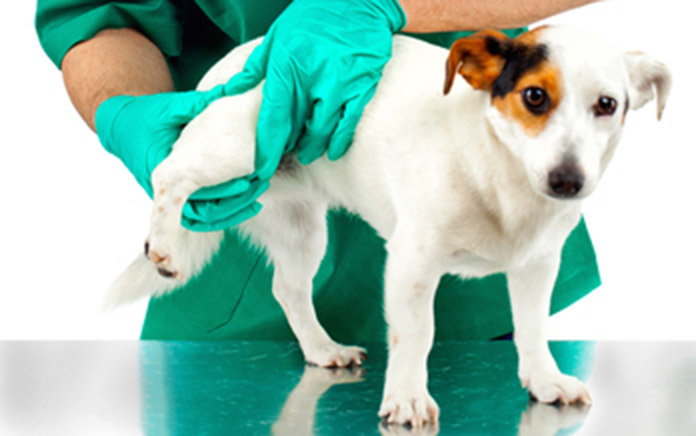
Photo: Shutterstock
Some dogs may have hip dysplasia but not display any symptoms of it. These are usually mild cases. Dogs of any age can develop hip dysplasia — even puppies. However, the condition becomes obvious usually mid-way or later in a dog’s life. Some dogs can even live most of their lives with few or no symptoms and only display discomfort from the disease during their later years.
Telltale signs that your pet may be suffering from this condition include trouble getting up due to stiffness and soreness of the hips. If your dog isn’t enthusiastic to exercise, jump and climb stairs, it is also likely that it has this hip problem. More severe symptoms include limping or bunny-hopping. If your dog displays any of these signs of discomfort, it’s best to take him or her to the vet for a check-up. Your vet will physically examine your dog to gauge whether it is indeed hip dysplasia. Radiographs and manual tests on the hip may also be necessary.
Hip dysplasia can be treated surgically, such as through hip replacement, or managed through non-invasive treatment such as diet, exercise, joint supplements, massage and medication to help the condition and manage pain. Only your vet will be able to guide you on the best course of action to take, according to your pet’s needs.
One of the most important considerations to take is managing your dog’s weight, as extra kilos can have a harsh impact on the joints, especially malformed ones.
Dogs with severe cases of hip dysplasia could experience a considerable amount of pain. Here are a few ways to help your pet deal with the discomfort:
• Massage your dog’s hips gently in a circular motion for about 5-10 minutes daily. If you feel that your dog does not like being massaged, stop doing it.
• Make sure your dog’s sleeping area is clean, dry and warm to prevent aggravating the hip problem. Having a firm, cushioned surface to lay on will also make him more comfortable.
• Put mats down on slippery, tiled surfaces to cut down the risks of him falling. Dogs with hip dysplasia can have a tough time negotiating smooth surfaces.
• Get a proper check up done with your vet. The disease can develop into arthritis, so taking the best care of your dog at the earliest is the best way to prolong your dog’s good health.
Share your thoughts, leave a comment below. Please like FamiLife’s page on Facebook so that you get all our articles and others may find us.
